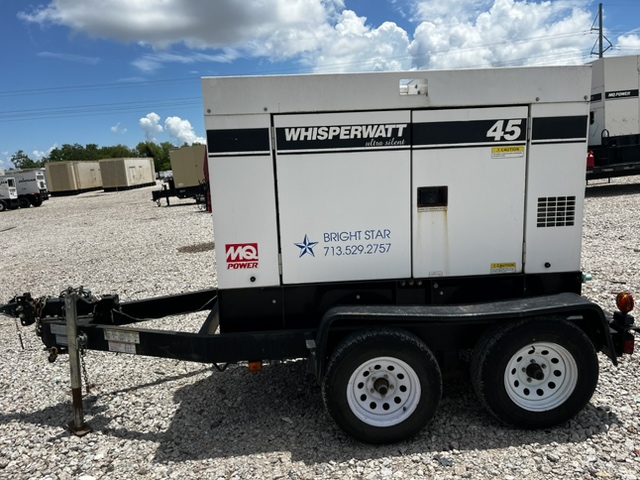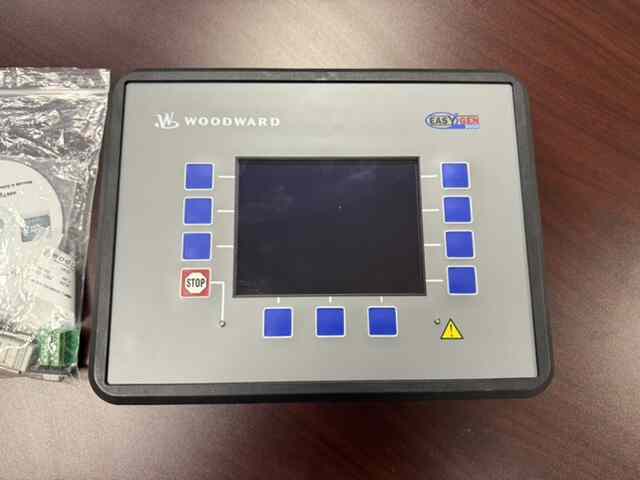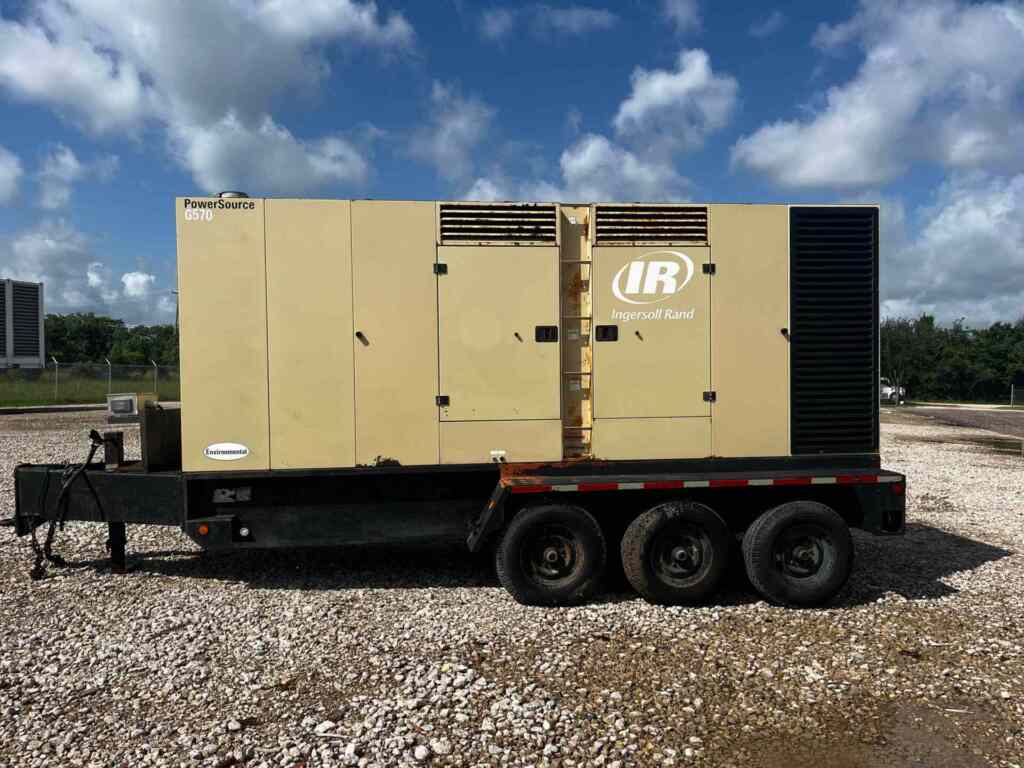Airports require a constant, reliable power supply to maintain safe and efficient operations. From air traffic control systems to baggage handling equipment, every critical function within an airport depends on electricity. To ensure uninterrupted service during power outages, airports rely on commercial and industrial generators. These robust backup power systems play a vital role in maintaining airport operations, safeguarding passenger safety, and minimizing disruptions to air travel.
Why Airports Need Reliable Power
Airports are like small cities that never close. They’re always busy, day and night, all year round. To keep everything running smoothly, airports need not only a steady supply of electricity but also a steady backup supply for emergencies. Without these standby generators, things can quickly go wrong when the main power fails.
Here’s some of the equipment that needs power at an airport:
- Runway lights to help ensure that planes take off and land safely.
- Air traffic control systems to manage the traffic above.
- Security scanners to keep passengers and employees safe.
- Check-in kiosks where you get your boarding pass.
- Baggage systems to handle your luggage.
- Boarding gates to let you onto your flight.
- Communication systems to keep everything coordinated.
- Navigation equipment to guide planes.
- Lights, air conditioning, and elevators in the terminal.
If the power goes out, it’s a big problem – for everyone. Flights will get delayed or canceled, passengers will be stuck between destinations, and the airport loses a lot of money. To avoid this nightmare, all airports have extensive contingency plans. That’s where commercial and industrial generators come in. These powerful machines provide a steady backup supply of electricity, kicking on when the main power fails and keeping the airport running even during blackouts.
Main Features of Airport Power Generators
Power generators for airports are specialized, industrial-grade systems designed to meet the unique demands of large-scale aviation facilities. These robust machines differ significantly from standard backup power solutions. Let’s examine the key features of airport generators:
1. High Capacity
Airport generators typically produce between 1000 and 3000 kilowatts (kW) of power. To put this in perspective, a 3000 kW generator could supply electricity to approximately 300 average American homes. This substantial capacity ensures that critical airport operations can continue uninterrupted during main power failures.
2. Fuel Efficiency and Reliability
Most generators for airports operate on diesel fuel, which is known for its dependability and extended storage life. This choice ensures a stable fuel supply during prolonged power outages. Some modern systems utilize natural gas or employ a dual-fuel approach, offering flexibility and potentially reduced emissions.
3. Rapid Response Time
Standby generators for airports are engineered to activate within 10-30 seconds of a power failure. This swift response is crucial for maintaining essential operations and ensuring passenger safety. The quick transition helps minimize disruptions to flight schedules and airport services. And, the transition happens automatically, ensuring a seamless and imperceptible move from grid power to an auxiliary source.
4. Redundancy and Reliability
To enhance reliability, airports often implement multiple generators operating in parallel. This redundant configuration ensures that if one unit experiences issues, others can compensate, maintaining a consistent power supply. This approach significantly reduces the risk of total system failure.
These features collectively make airport generators highly reliable and efficient systems, capable of meeting the demanding power requirements of modern aviation facilities. Their design and implementation are critical to ensuring the continuous, safe operation of airports during unexpected power interruptions.
Types of Generators Used in Airports
Airports utilize various types of power generators to ensure uninterrupted operations:
| Generator Type | Primary Use | Typical Capacity |
| Standby Generators | Emergency backup for critical systems | 1000-3000+ kW |
| Prime Power Generators | Continuous power supply in remote locations | 500-2000+ kW |
| Mobile Generators | Temporary power for maintenance or emergencies | 100-500 kW |
The Impact of Power Outages on Airports
Power outages at airports can have severe consequences. Let’s look at some real-world examples:
- In 2017, Atlanta’s Hartsfield-Jackson International Airport experienced an 11-hour power outage, canceling over 1,000 flights and costing airlines an estimated $50 million.
- In 2018, Reagan National Airport in Washington D.C. lost power for about an hour, causing flight delays and leaving passengers in the dark.
- In 2019, Sabiha Gokcen International Airport in Istanbul faced a 6-hour outage, disrupting flights and causing chaos for travelers.
These incidents underscore the critical need for reliable standby generators in airport operations. Reliable vendors like Turnkey Industries can help ensure airports are supplied with the power they need, even during emergencies.
Choosing the Right Generator for Airport Applications
Selecting the appropriate power generators for an airport is a complex process. Here are key factors to consider:
- Power Requirements: Calculate the total power needed to run critical systems and essential operations.
- Fuel Efficiency: Look for generators that offer optimal fuel consumption to reduce operating costs.
- Reliability: Choose generators with proven track records in mission-critical applications.
- Maintenance Needs: Consider the long-term maintenance requirements and associated costs.
- Environmental Impact: Evaluate emissions and noise levels to ensure compliance with local regulations.
- Scalability: Select a system that can grow with the airport’s future needs.
Maintaining Airport Generators: Best Practices
To ensure standby generators are ready when needed, airports must follow strict maintenance protocols:
- Regular Testing: Run generators under load once a month.
- Fuel Management: Regularly test and replace stored fuel to prevent contamination.
- Preventive Maintenance: Schedule routine checks and servicing as recommended by the manufacturer.
- Load Bank Testing: Conduct annual full-load tests to verify generator performance.
- Training: Ensure staff are well-trained in generator operation and emergency procedures.
The Future of Airport Power Generation
As technology advances, so do airport power solutions. Here are some trends to watch:
- Hybrid Systems: Combining traditional generators with renewable energy sources like solar panels.
- Microgrid Integration: Developing self-contained power grids for enhanced reliability and efficiency.
- Smart Power Management: Implementing AI-driven systems to optimize power distribution and consumption.
- Fuel Cell Technology: Exploring hydrogen fuel cells as a cleaner alternative to diesel generators.
Partner with Turnkey Industries for Your Airport Power Solutions
When it comes to powering critical airport operations, you need a partner you can trust. That’s where Turnkey Industries comes in. With over a decade of experience in the industrial generator market, we understand the unique power generator needs of airports like no one else.
At Turnkey Industries, we offer:
- A wide range of commercial and industrial generators from top brands
- Expert consultation to determine the right power solution for your airport
- Comprehensive installation and maintenance services
- 24/7 emergency support to keep your operations running smoothly
Don’t let power outages ground your operations. Choose Turnkey Industries to keep your airport powered and your flights on schedule. With our generators, you can ensure the skies stay open, no matter what challenges arise.
Call Turnkey Industries today at call 713-823-0890 or visit our website to explore our range of airport-ready power generators. Let us be your trusted partner in powering the future of aviation.
 Turnkey Industries offers a variety of high-capacity
Turnkey Industries offers a variety of high-capacity 





